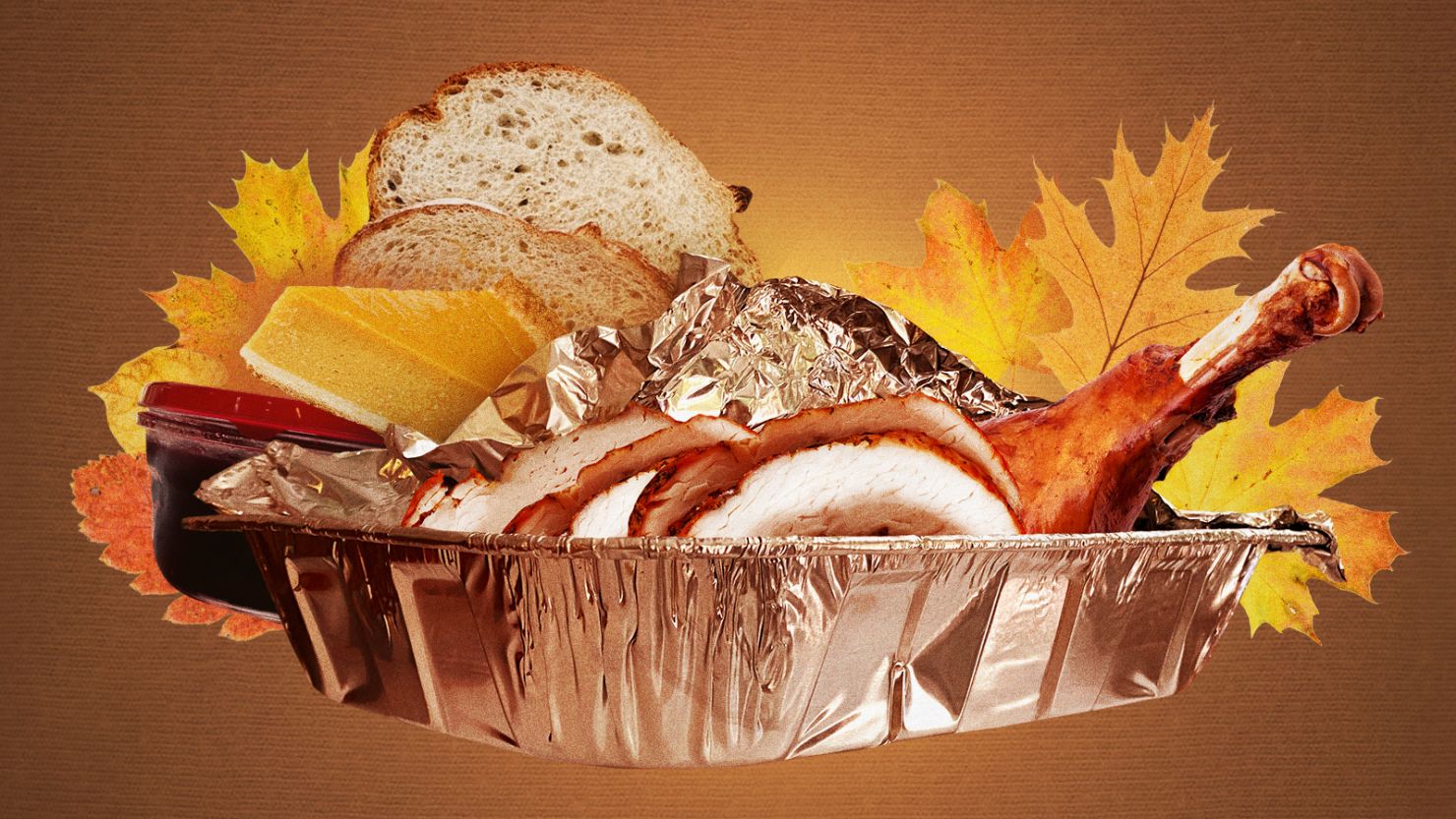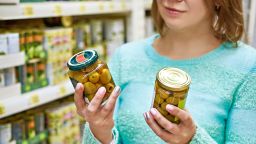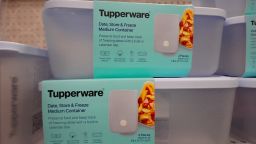Sign up for CNN’s Eat, But Better: Mediterranean Style. Our eight-part guide shows you a delicious expert-backed eating lifestyle that will boost your health for life.
Unless you’re that rare type of person who loves cooking every single meal from scratch every single day, leftovers are an inevitable part of life. And not just right after Thanksgiving.
I personally love leftovers because they give me a breather from the constant churn of cooking and prepping. I subscribe to the philosophy of “cook once, eat twice” for nearly every dish that goes onto my meal plan, and it’s a strategy I teach others in my meal plan coaching program.
But for many, the word “leftovers” inspires sighs and resignation. I hear so many complaints about their existence — they never taste as good the next day, everything gets soggy and limp or tough, or they just go to the back of the fridge until they rot.
Leftovers that no one wants to eat also contribute to food waste. In the United States, about 20% of cooked food is tossed into the trash every year, according to a recent study.
How do we go from yuck to yum when it comes to our collective opinion of leftovers? After years of conversations (basically food therapy sessions) with everyday cooks, I believe the solution lies in making small tweaks to the way we reheat food — prioritizing methods that preserve the taste and texture of the dishes we loved in the first place.
Here are my strategies for reheating meals that taste just as good the second (or third) time around and eating every single portion of everything I cook.
Why the microwave isn’t always the best choice
Be honest: Your first impulse, your automatic muscle-memory response when dealing with leftovers is to shove them into the microwave and zap until steaming. But that’s not always the method that will give the most optimal results for most foods.
Though all heat transfer occurs through the three methods of conduction, convection and radiation, “microwaves play by a completely different rule set” than conventional ovens and cooktops when it comes to heating food, said Margot Vigeant, professor of chemical engineering at Bucknell University in Pennsylvania.

The thermal energy created through microwave radiation generates heat by making the water molecules in food “jiggle,” Vigeant said. “You know how you can warm up your hands by rubbing them together?” she asked. “You can do that at the molecular level. A whole bunch of molecules jumping up and down next to each other will warm up.”
However, the heat created through microwave energy can’t produce the Maillard reaction, the scientific name for the browning, caramelized effect produced by cooking foods at high temperatures. (Think about the crispy skin on a roasted chicken or the crunchy crust of a French baguette.)
This is why a microwaved slice of pizza will stay soggy: The formerly crunchy crust absorbs moisture from the cheese and tomato sauce as it sits in the fridge. When reheated in the microwave, the water molecules in the crust will activate and boil instead of brown, keeping the texture limp instead of re-crisping.
It’s also why a breaded chicken cutlet or pile of French fries tastes so disappointing after a nuking. Instead of turning to the microwave as your first responder in reheating, you’ll have a more satisfying experience if you try and replicate the original cooking method as much as possible.
Consider the toaster oven, air fryer or skillet
Yes, it takes a bit longer to reheat food with these non-microwave methods, but I deeply feel the trade-off of time versus taste is worthwhile.
Most new toaster ovens are referred to as countertop ovens these days — a more fitting name, considering they have multiple functions beyond simple toasting. These ovens can reheat food without waiting to preheat, and many offer convection, air frying or one-touch pizza options.
Any of these settings will reheat most meals, whether it’s leftover Thanksgiving turkey, veggie loaf or a slab of homemade mac and cheese, in a manner that keeps proteins juicy instead of dried out or rubbery, reinvigorates crunchy breading and makes cheese bubbling and browned once more.

I use my countertop oven daily for initial cooking as well as reheating most of our family meals. My oven is large enough to fit a 9-by-13-inch sheet pan or casserole dish or a 10-inch round pan, so it fits a full meal easily rather than waiting for a smaller microwave to reheat one plate or portion at a time.
It’s my go-to appliance for its versatility and performance. However, a standard air fryer can work similarly to a countertop oven to restore the balance of crunchy and juicy in most foods. For either, start by reheating your dishes at 360 to 375 degrees Fahrenheit until you find the sweet spot that works for you.
But a simple skillet can also provide excellent results for many leftovers. I use my arsenal of cast-iron skillets and stainless steel pans when I’m not punching the button on my countertop oven, and they’re my preferred method for reheating pastas, curries, stir-fries and other simmered or saucy dishes.
A splash of water or broth is the key to restoring the saucy texture to your favorite dishes in a skillet as well as reheating cuts of meat such as turkey, chicken or pork — with one exception. Add a few tablespoons of liquid to the food, then cover and reheat over medium-low heat, stirring occasionally. If the food starts to stick before it’s heated through, add more liquid as needed. You won’t be watering it down; you’ll be reestablishing the correct balance.
The exception to the “just add water” rule is, of course, breaded foods. In this case, steer clear of the water and re-pan fry the foods in a small amount of oil to bring the crunchy coating back to life.
What foods work best for microwave reheating?
I’m not saying you need to abandon the microwave completely. Foods that have a main liquid component, such as soups and stews, are a natural fit for microwave reheating. Vegetables are naturally high in water, so that’s why they steam up so perfectly in the microwave, too.
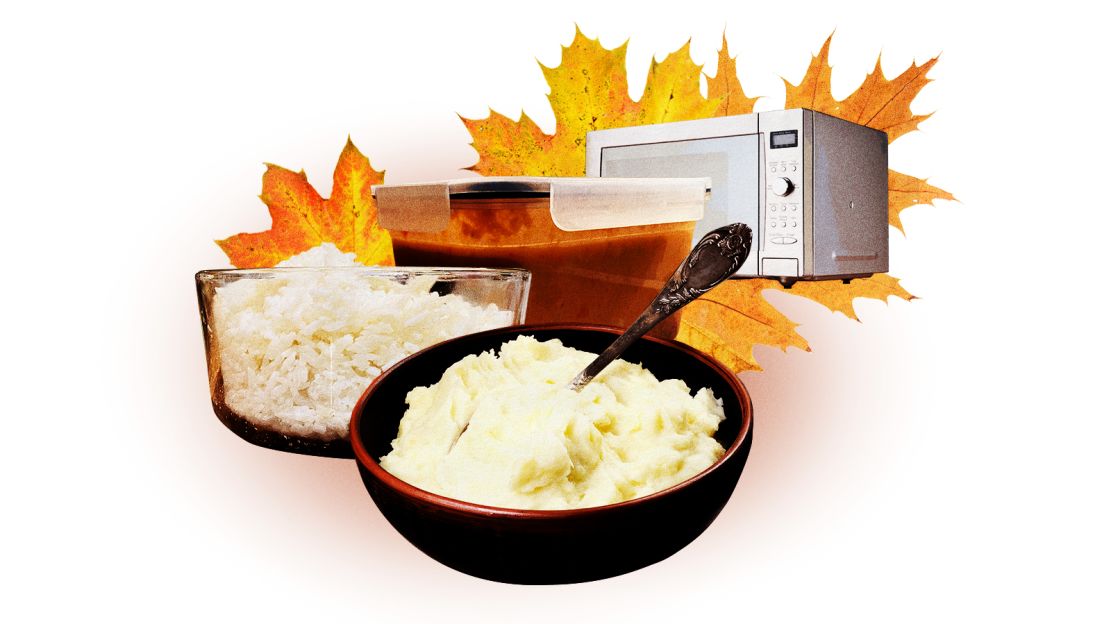
Microwaves also do well with starchy foods such as rice or potatoes. “Those starch molecules crystallize in the fridge,” Vigeant said, and microwaves can help rehydrate the starches and restore the creamy, tender texture of these dishes.
Don’t forget about the leftovers in the first place!
Having a basic meal plan is one of the most crucial ways you can stop leftovers from being doomed to oblivion. Your strategy can be as simple as sticking a whiteboard on the fridge to jot down a list of what’s inside, a calendar where you can assign meals to each day or a larger system.
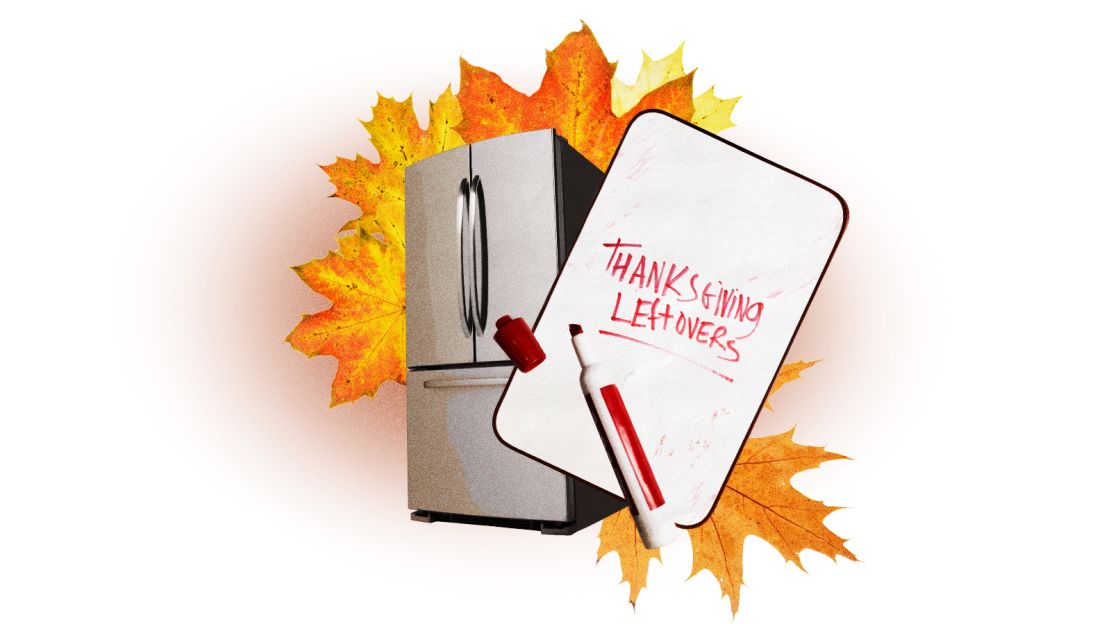
But you’ve already put in the effort to cook this food, and it’s basically a free pass to get away without cooking tonight — so take it. Leftovers are the ultimate kitchen example of “working smarter, not harder,” so use them to your advantage.
Casey Barber is a food writer, artist and editor of the website Good Food Stories.
